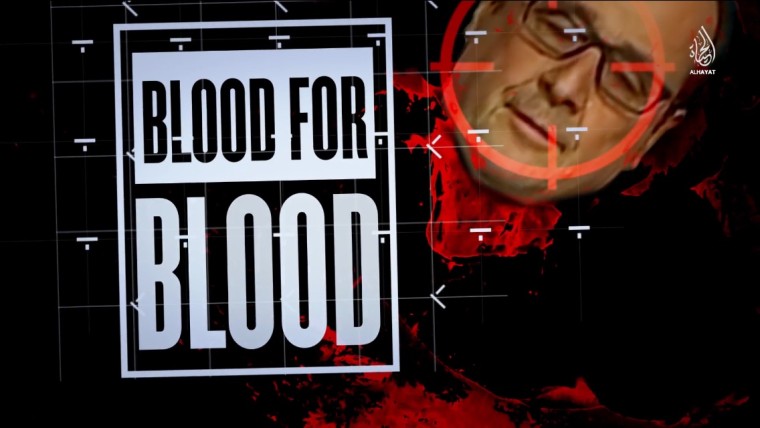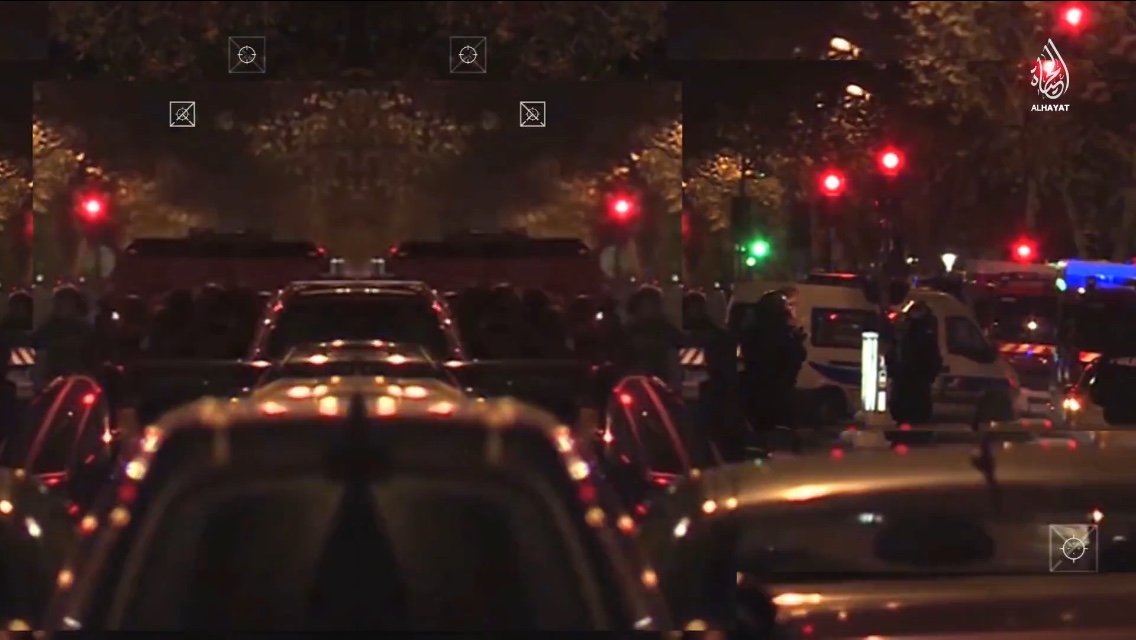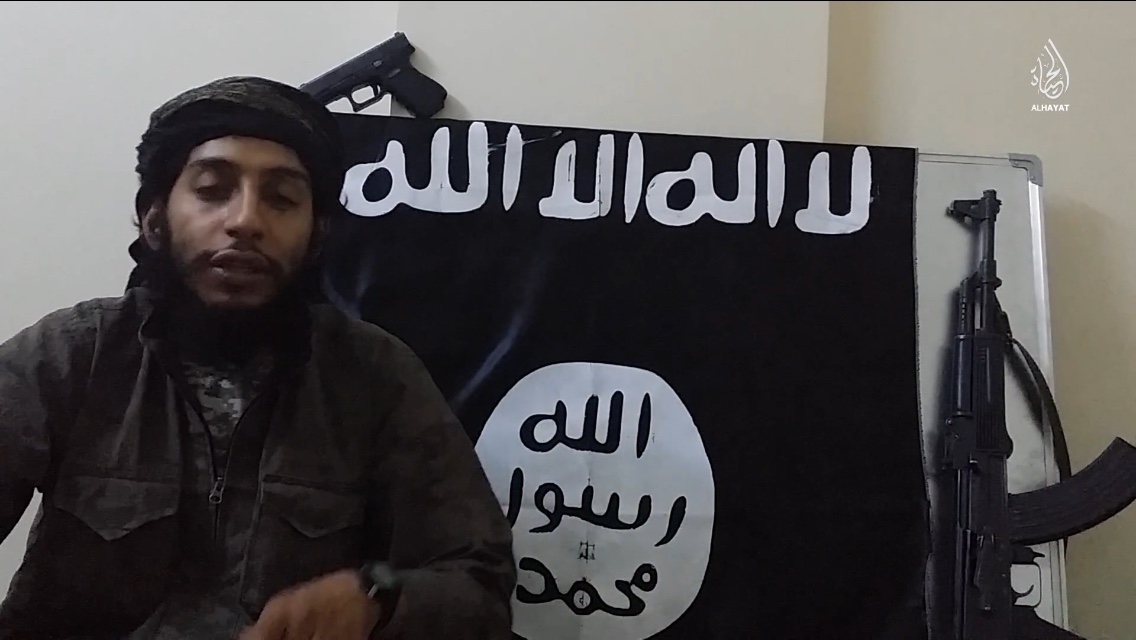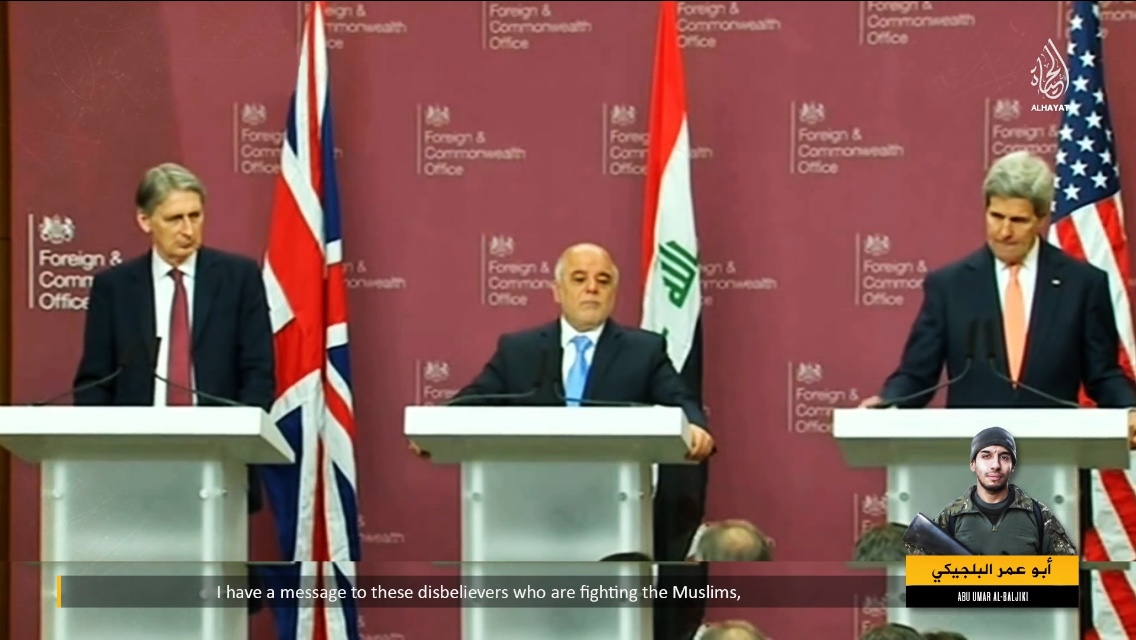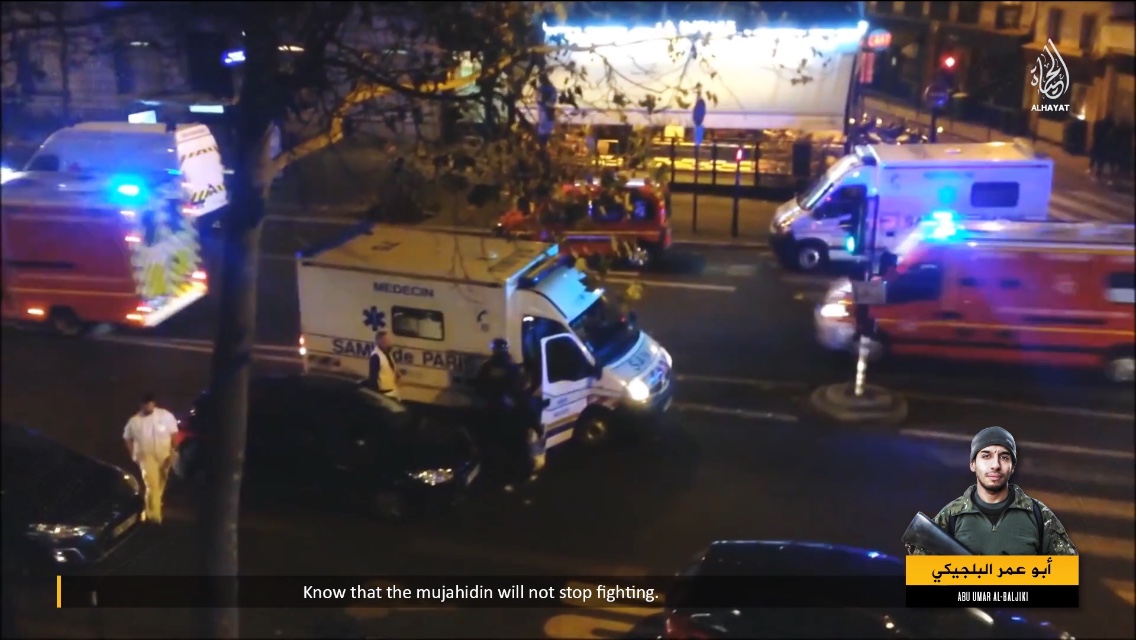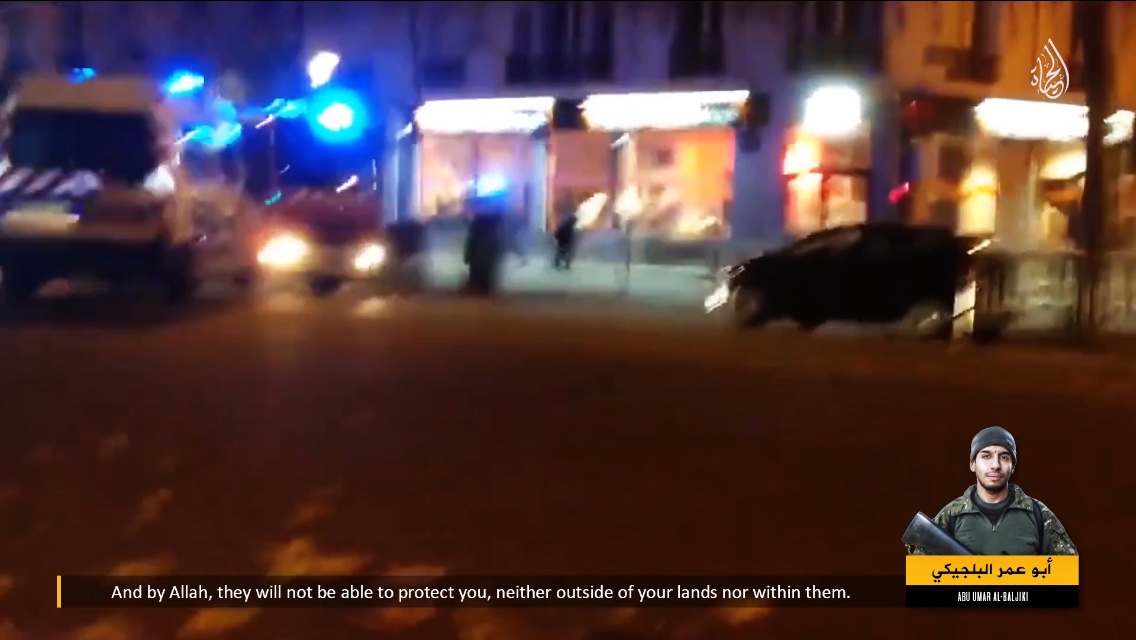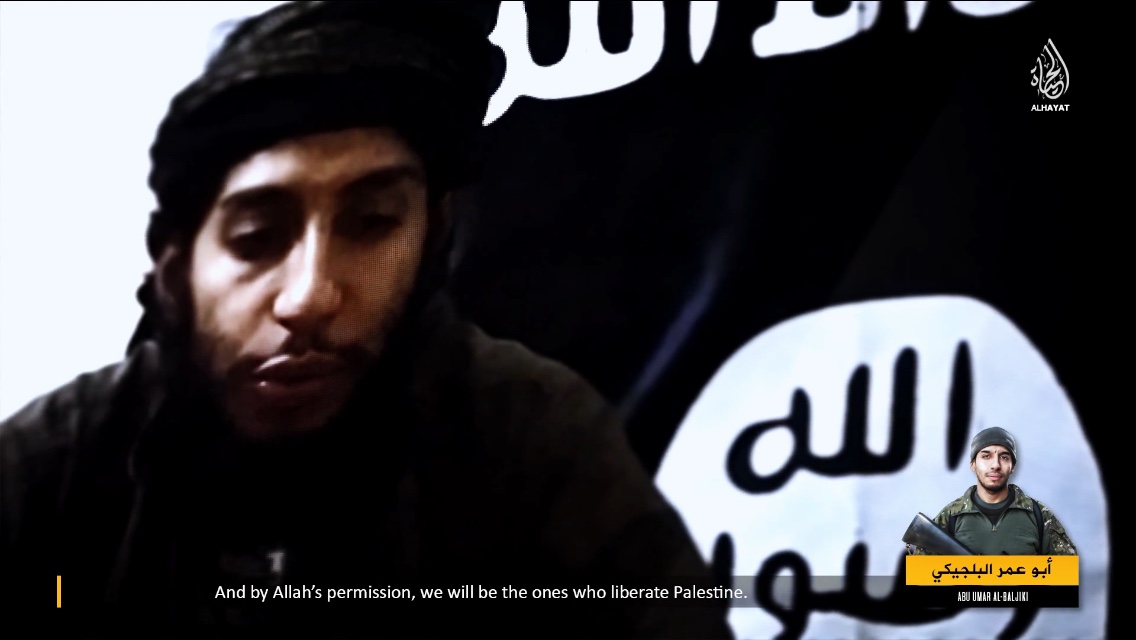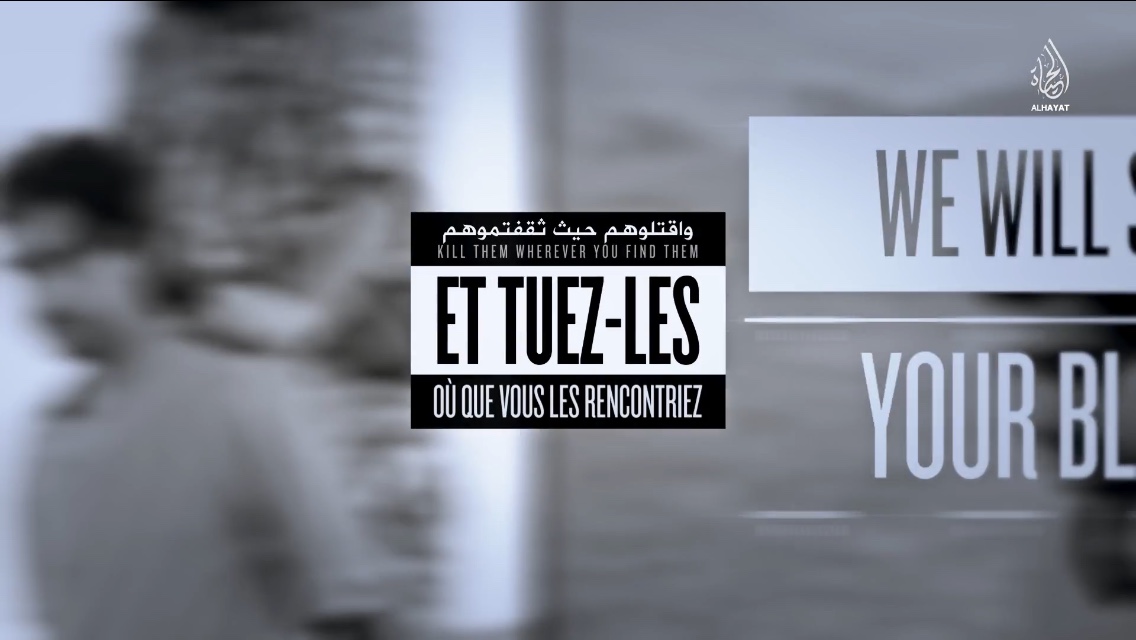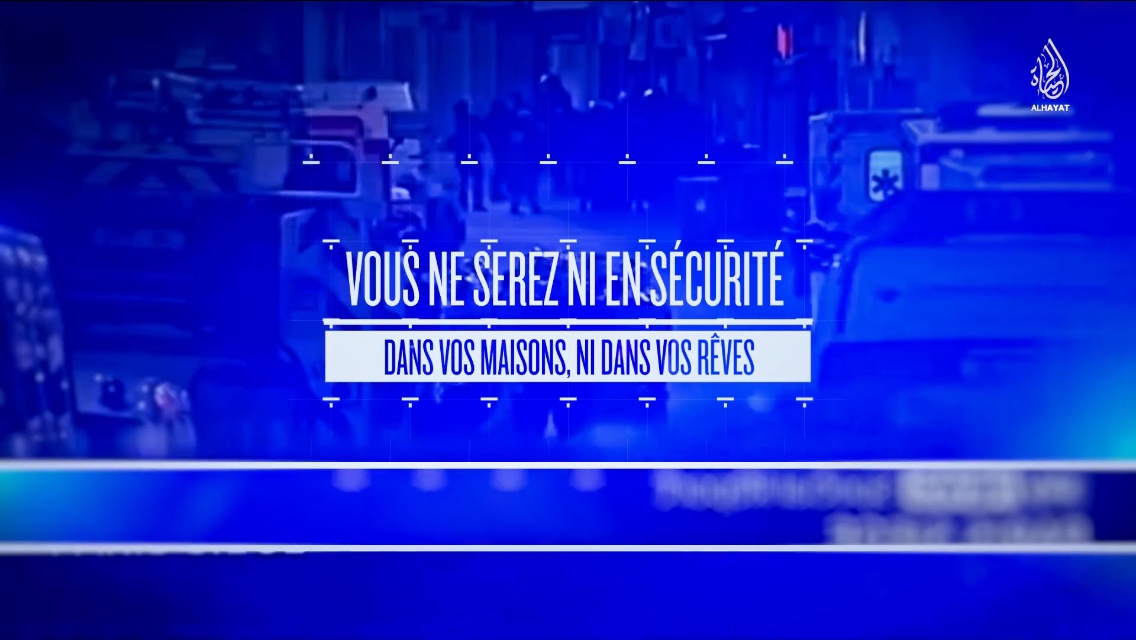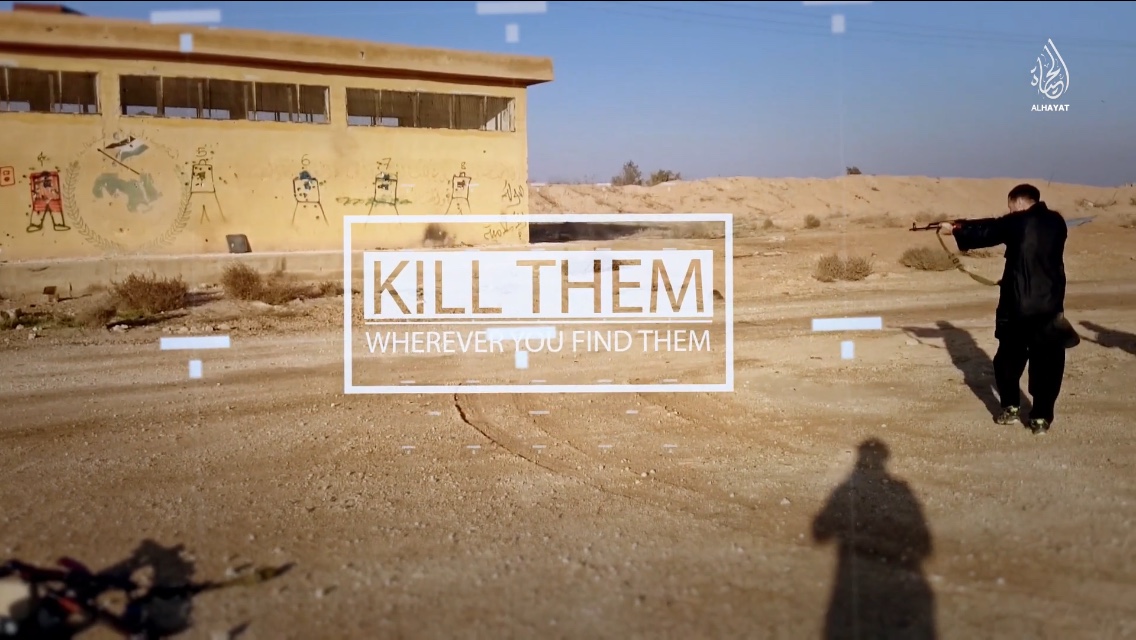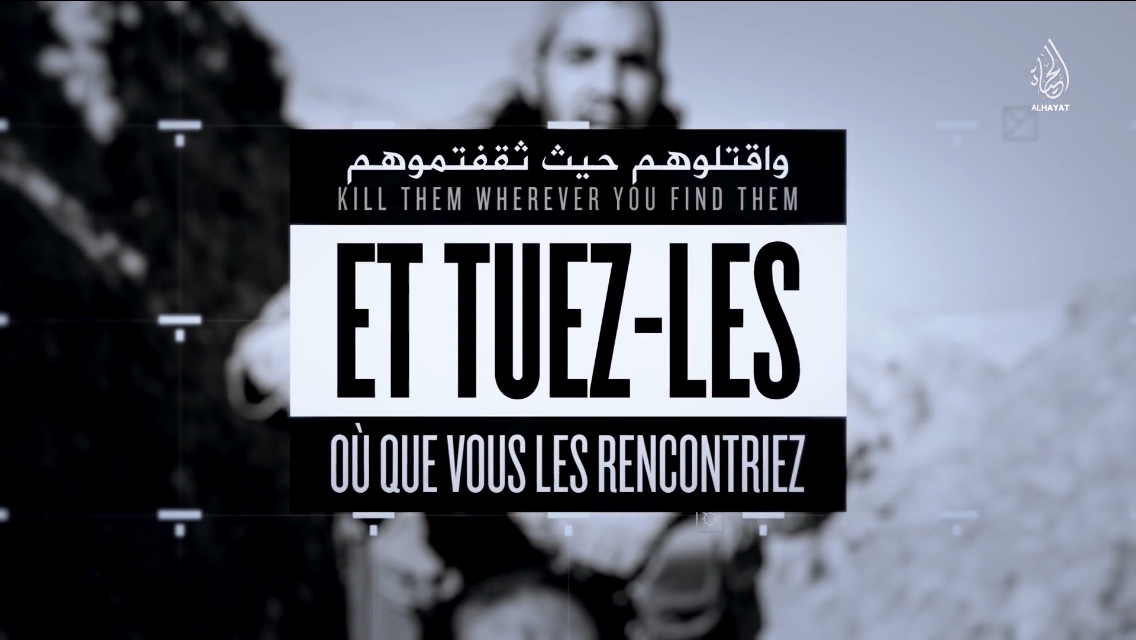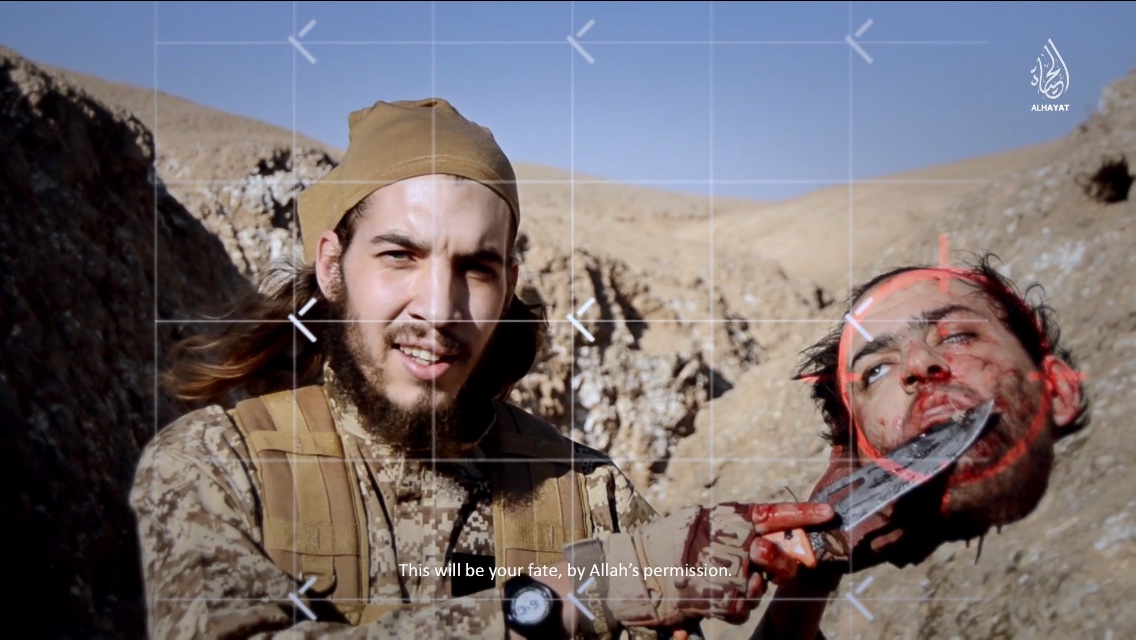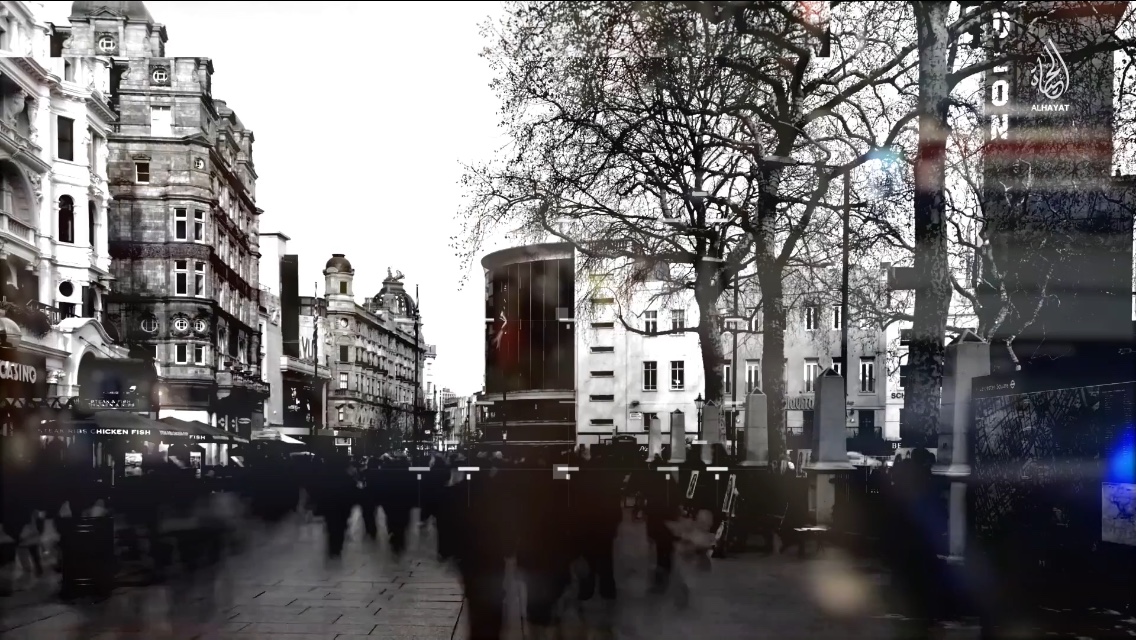ON THE LATEST IS VIDEO RE PARIS
ON THE LATEST IS VIDEO RE THE PARIS PLOT
By Michael S. Smith II
WARNING: DISTURBING IMAGES
On 24 January 2016, Islamic State propagandists distributed via Twitter an announcement of a forthcoming video from the group’s Al-Hayat media organization, titled “Kill Them Wherever You Find Them.” Focused on the terrorist organization’s 13 November attacks in Paris, France, several hours later, the roughly 18-minute-long video containing various news organizations’ footage of the attack scenes in Paris, along with messages delivered by participants in the group’s Paris plot — in some cases, while they execute prisoners — was posted online. On Twitter, Telegram Messenger channels, and other social media and texting platforms commonly exploited by the Islamic State’s propagandists, links were distributed to where the video could be viewed via Archive.org, YouTube, Google Drive, and various other file sharing sites commonly utilized by the Islamic State to manage the most aggressive and effective global influence operation of any terrorist group in history.
A review of the videos posted online reveals there are two versions of the video, with one containing English subtitles throughout, and another containing Arabic subtitles. Evidently, the key audiences are French, English, and Arabic speakers. Further, the computer graphics-intensive features, fast-paced content transitions, plus the fact that terrorists featured therein are all young, and cast in the light of celebrity-like figures as they issue appeals directed at Muslims in the West, indicates young impressionable people in the West comprise the target audience.
A WARNING?
The video begins with footage showcasing the decryption of a PGP-encrypted e-mail. (Note: Details for the secret 4096-bit RSA key indicate it was created “2015-11-16,” which was three days after the Paris attacks unfolded; a search for the key in the public PGP key directory using the key’s ID did not yield any results.)
The decrypted messages states:
Operation: KILL THEM WHEREVER YOU FIND THEM
Starting date: 13 November 2015 — 21:20
Group 1
Target : Stade de France
Location : 93216 Saint-Denis, France
Group 2
Target: Le Petit Cambodge
Location: 20 Rue Alibert, 75010 Paris, France
Group 3
Target: Café Bonne Bière
Location: 32 Rue du Faubourg du Temple, 75011 Paris, France
Group 4
Target: La Belle Équipe
Location: 92 Rue de Charonne, 75011 Paris, France
Group 5
Target: Bataclan
Location: 50 Boulevard Voltaire, 75011 Paris, France
Later, the video concludes with footage of the arrival of another PGP-encrypted e-mail. This concluding scene follows a clip containing an image of David Cameron, with text transposed in the foreground that states, “Whoever stands in the ranks of kufr will be a target for our swords and will fall in humiliation.”
While a target list for future attacks is not provided, these editorial decisions indicate one objective of the video’s producer(s) is to put the world on notice that Islamic State members may be communicating via difficult-to-intercept channels about additional attack plots outside the group’s primary areas of operation. Meanwhile, as English-speaking audiences are among the three primary audiences targeted by the producers of the two versions of the video initially posted online, it is noteworthy that the video also contains images of US President Barack Obama and US Secretary of State John Kerry.
Interestingly, the video literally portrays the Paris plot as having been an act of terrorism, and stamps that read “terror” are imposed on various scenes throughout the video. Whereas other jihadist groups have exhaustively refuted claims they are terrorist organizations, in the first message delivered in the video, Abu Umar al-Baljiki proclaims (emphasis added): “So if you have sent your ‘Hunter’ fighter jets to bomb the Muslims, then know that the Islamic State has sent to you “hunters” who thirst for the blood of the disbelievers, hunters who will not hesitate to slaughter you. For we are terrorists.”
Continuing, in the next breath, al-Baljiki ostensibly seeks to draw a contrast between the Islamic State and other jihadist groups by suggesting the Islamic State is rigorously demonstrating its adherence to the faith by defending Muslims from the “disbelievers.” This, while also attempting to endear the group to a larger audience of Muslims than just Salafi-Jihadist elements by invoking the Palestinian issue. “We are the ones who terrorize the disbelievers. We are the ones who terrorize those who terrorize the Muslims. And by Allah’s permission, we will be the ones who liberate Palestine,” he concludes (emphasis added). For attentive audiences, this will bring to mind not only the contents of Abu Bakr al-Baghdadi’s most recent public statement that highlighted he aspires for his group to take the lead in defending the interests of Palestinians; this will also bring to mind articles published in the Islamic State’s popular publication Dabiq that claim the Islamic State is the true torchbearer of the jihad charted by al-Qa’ida’s founding leader Usama bin Ladin, and his successor, Ayman al-Zawahiri, has steered al-Qa’ida off course. Indeed, bin Ladin threatened to attack France on several occasions just before his death, and a recent edition of al-Qa’ida’s popular publication Inspire called for attacks targeting cultural symbols like the Louvre (think Bataclan theater) and major sporting events like the one Islamic State operatives targeted in Paris. The latter of which, perhaps coincidentally, was attended by the president of France, whom the Islamic State’s propagandists both previously portrayed as a target, and more recently have portrayed as a target in this latest video. Just imagine what assassinating the president of France on Friday the 13th would have done for the Islamic State’s brand equity in the Global Jihad movement.
A NEW PARADIGM OF RELEVANCE FOR PROPAGANDA?
After years of veiled threats being publicly aired by al-Qa’ida, both in its leaders’ statements and in publications such as Inspire, it has become commonplace for senior intelligence and law enforcement officials to view with circumspection statements of intentions to expand terrorism operations in the West contained in jihadist groups’ propaganda libraries. For example, days after the Paris attacks in November 2015, as Islamic State propagandists increased communications about prospective plans to execute attacks in Belgium, the UK, and the US, FBI Director Comey advised, “ISIL propaganda is not ‘credible intelligence.’” Yet there is increasing evidence that, due in large part to the unprecedented competition for dominance within the Global Jihad movement underway between the Islamic State and al-Qa’ida, prudence may require a recalibration of how counterterrorism practitioners analyze propaganda materials.
By the time FBI Director Comey issued that statement, it was widely known that at least one of the terrorists involved in the Paris plot had been featured prominently in Islamic State propaganda materials. Additionally, the Islamic State’s mouthpieces had repeatedly expressed the group intended to expand its operations in the West, with France receiving a great deal of attention in the group’s propaganda.
Given the intensely orthopraxic ideology (i.e. Salafiyya Jihadiyya) that informs the agendas of the Islamic State, al-Qa’ida, and all elements comprising the Global Jihad movement, one way for the Islamic State to achieve favor over al-Qa’ida among key prospective bases of support is through action. For, according to the most basic tenets of this ideology, faith is demonstrated by action. Or, more specifically, by waging jihad against individuals and entities perceived as agents of “unIslamic” agendas which threaten to undermine the influence capabilities of the truly faithful by relegating the significance of the “pure” faith in all institutions. Moreover, most all elements comprising the Global Jihad movement aspire to punish Western governments and their bases of support, which are viewed as responsible for damaging the integrity of Muslim societies by imposing secularist influence in so-called “historically Muslim lands” that they believe ought to be ruled by strict interpretations of sharia (Islamic law).
Clearly, at a time when the Islamic State is competing with al-Qa’ida for dominance in the Global Jihad movement, for the Islamic State’s leadership, matching words with deeds is a crucial component of their strategy to establish perceptions of credibility among key prospective bases of support — from branches of al-Qa’ida the group hopes will defect, and pledge bayat (allegiance) to al-Baghdadi, to major terrorism financiers in the Gulf, and from aspirant jihadis who have not yet joined a group, but are headed to the Islamic State’s primary areas of operations, to not-yet-radicalized prospective recruits around the world.
One way to manage perceptions in this regard is to publicly issue statements concerning the group’s objectives, such as the executions of attacks in the West, and then meet, or exceed expectations created through the issuances of these statements. Meanwhile, one way to make al-Qa’ida look like all-blow, no-show toothless tigers is to execute attacks which have been called for by al-Qa’ida. Thus it is noteworthy that intelligence indicates an individual linked to al-Qa’ida’s network in Gaza may have called for an attack targeting the Bataclan theater in 2009.
As the US and other governments continue to refuse to respond to threats posed by the Islamic State with the ground forces-intensive measures that al-Baghdadi knows will propel him into the status of a Mullah Omar — whom al-Qa’ida’s leadership pledged bayat to and referred to using a title historically reserved for the caliph (i.e. Emir al-Mu’minin) — it is reasonable to anticipate his group will increasingly orient its resources toward demonstrating it is capable of doing things in the West that al-Qa’ida leaders (mostly) only talk about. And it is very likely that statements concerning intentions to conduct operations in certain areas contained in the group’s propaganda will be harbingers of terrorist attack plots executed by the group’s members and supporters.
Not only does the pairing of overt statements concerning plans to conduct operations in a given area with actual attacks in that area serve to bolster perceptions of the Islamic State’s credibility among both its acquired and prospective bases of support; this increases the terrorist group’s capabilities to terrorize civilian populaces by undermining confidence in technologically-superior governments’ capabilities to manage threats posed by this group. Indeed, it is difficult to imagine the impact of this scenario: The next time the Islamic State tweets a home address for a senior intelligence official like FBI Director Comey, or CIA Director Brennan, a terrorist is already on standby to hurl a bomb — made in the kitchen of her mom — at that official’s home. (Yes, we did share the tweets containing addresses for D/FBI Comey, D/CIA Brennan, and other current and former senior USIC officials with the appropriate authorities.)
Also see “The Imminent Front” by Michael S. Smith II
The following are screenshots from the Al-Hayat (Islamic State) video “Kill Them Wherever You Find Them”


